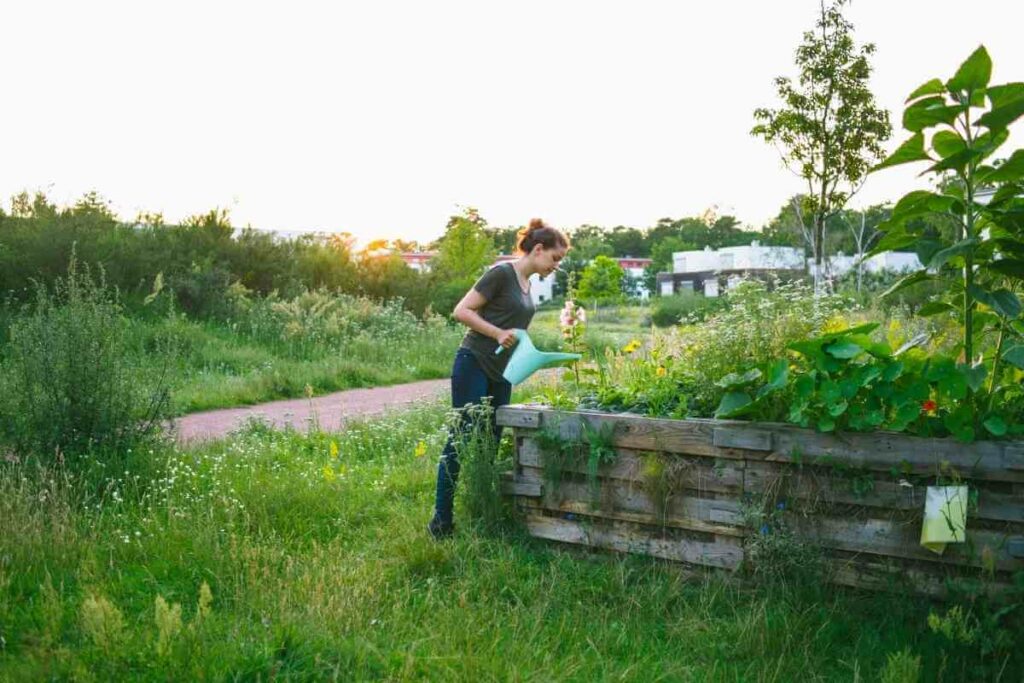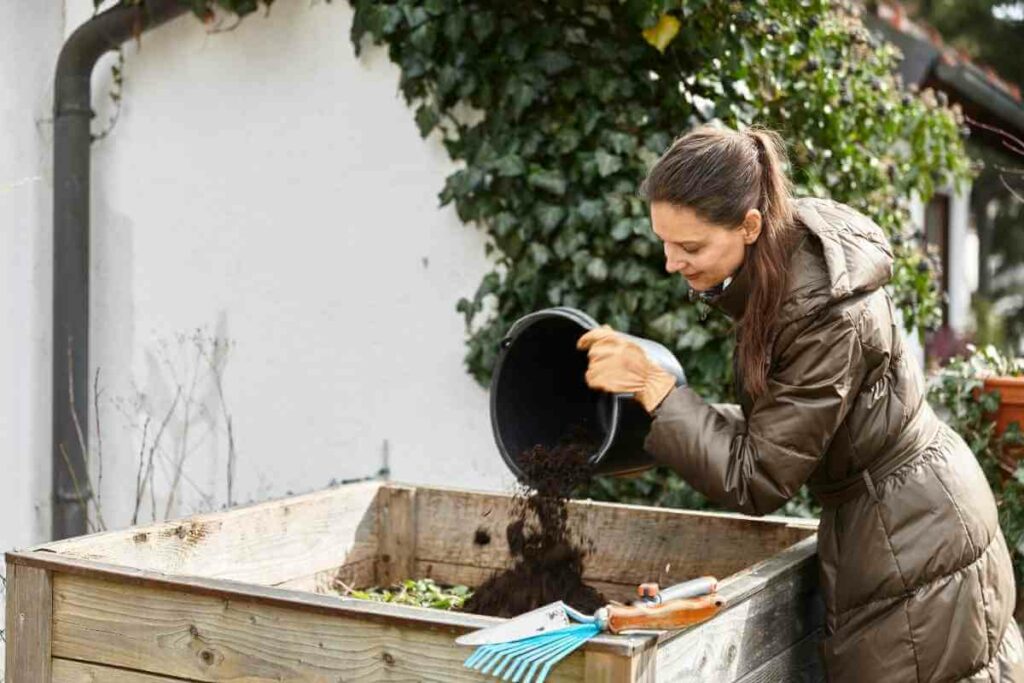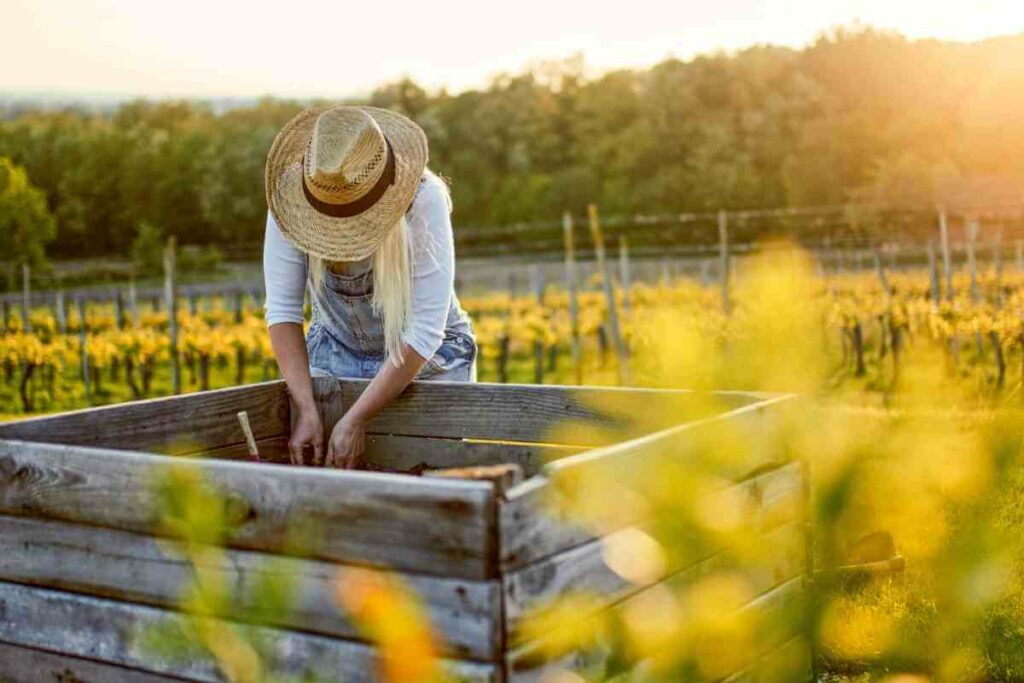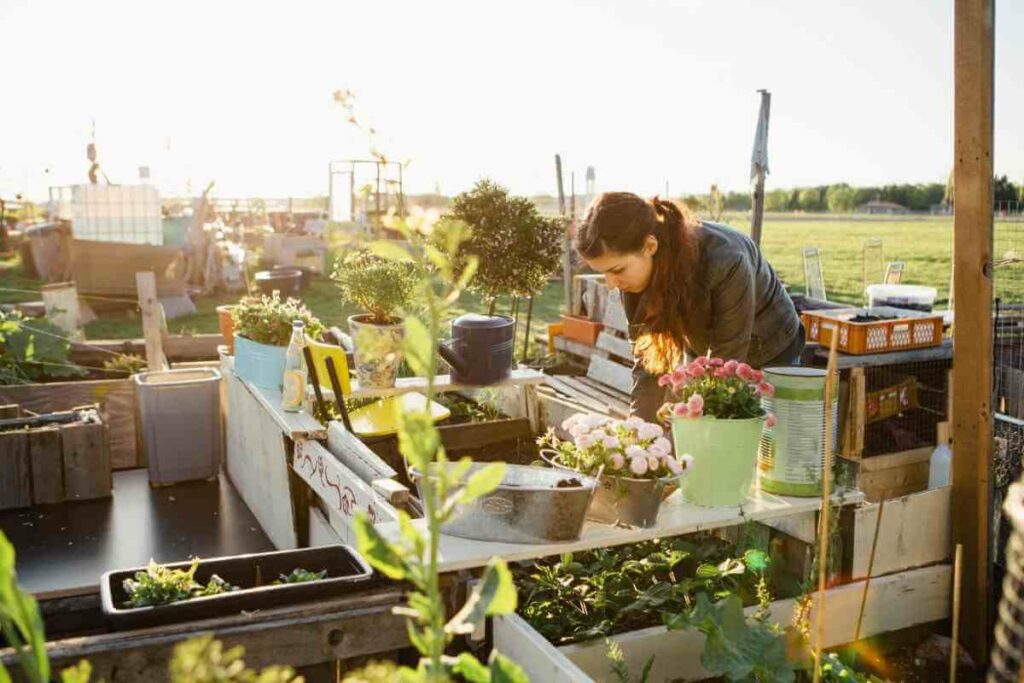Yes, it’s important to drill holes in the bottom of your raised garden bed because they facilitate drainage. If you accidentally overwater the soil, the extra water will seep through these openings.
That said, you should cover the holes with a stone bigger than the openings to prevent soil from slipping out with the water.
What Is a Raised Garden Bed?

A raised garden bed is a freestanding structure that sits above the ground in a sunny spot and is filled with soil or any other growth medium.
Did You Know? Most beds are open at the bottom to allow plant roots to access nutrients below ground level.
What Are the Advantages of Raised Gardens?

Below are some of the benefits of raised garden beds.
Improved Soil
As with in-ground gardens, the soil in raised garden beds doesn’t get stepped on.
Also, it isn’t subjected to the weight of machines. As such, it doesn’t get compacted.
Additionally, you choose the type of soil you put in a raised garden bed.
This means that you can use specific nutrients to support optimal plant growth.
Improved Drainage
Growing plants on a raised bed might be useful if you live in an area with poorly drained soils.

By raising the soil, drainage improves significantly.
You can also mix the soil to your desired specifications, enabling you to create fine loam soil in areas with clay and sandy soils.
Better Yields
Another benefit of raised beds is that the soil warms up quicker than the surrounding soil.
Warmer temperatures allow you to grow plants before other gardeners relying on native soil.
Moreover, the soil in raised beds has better aeration and water flow.
Plant roots can spread farther than on conventional gardens.
Unlike standard gardens, you can maximize the space on raised beds. This is because you don’t have to leave room for pathways.
Simplified Weed & Pest Control
Since you can grow plants densely on a raised garden bed, weeds don’t thrive as much as they do on conventional gardens.

The raised bed walls act as a barrier against blowing seeds and rhizomes.
It’s also easy to regulate pests on a raised bed.
For instance, covering with nets helps protect your plants against birds.
You can use metal screens to prevent rodents from attacking your crop.
Moreover: The small raised beds make it less tiresome to control pests than on large, conventional farms.
Easy Access
Some people don’t practice gardening because of the constant bending and squatting required when tending to plants.
If you suffer from joint pain, engaging in such activities can be challenging and painful.
However, raised beds don’t take a toll on your joints. You can water the plants, remove weeds and apply fertilizers while standing.
This makes them a convenient option for many, especially those with joint problems.
Why Should You Drill Holes in the Bottom of Your Raised Garden Bed?

The following are the potential benefits of drilling holes in the bottom of your raised garden bed.
Better Drainage
It’s worth noting that raised garden beds are heavy.
If the soil has too much water, the garden will exert too much pressure on the base.
Also, the stagnant water might cause damage to your plant roots.
For this reason, it’s advisable to drill holes at the bottom of your garden. Ideally, the holes should be 0.25 inches wide.
Excellent Advice: Ensure that each corner has a hole, then add a 2” layer of gravel at the base of the garden to improve drainage.
Improved Ventilation
Besides drainage, the holes at the bottom of your raised garden bed also improve ventilation.
When air flows freely around the soil, plants grow faster because their roots have better access to oxygen and other nutrients.
Another way of improving ventilation is by constantly working the soil in your garden bed.
This loosens the particles and creates air spaces inside the soil.
What are the Best Materials for Making Raised Garden Beds?

Here are the materials you can use to construct raised garden beds.
- Hardwood or softwood as long as it’s treated
- Corrugated metal
- Bricks, Stone and even concrete blocks
- Chopped Tree logs
- Wine barrels
- Straw bales
- Pallets and recyled wood
- We have even seen Glass raised beds!
Wrapping Up
If you have constrained space, raised garden beds allow you to grow your favorite crops.
Besides, these installations are easier to manage than conventional farms. More importantly, they produce high yields.
However, you need to drill holes at the bottom to promote drainage and improve ventilation.
The holes will prevent the adverse effects of overwatering, such as root rot and retarded plant growth.


